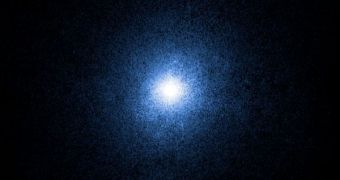Detailed analysis of one of the most studied black holes ever revealed that the object is warping space and time around it. The data also provided critical insight into the strength of the magnetic fields surrounding the cosmic structure.
Cygnus X-1 is one of the most powerful X-ray sources in the known Universe. Tipping the scales at 8.7 solar masses, the black hole has been under scientific scrutiny since its discovery in 1964. Making matters even more interesting is the fact that it's a part of a binary system.
Its companion is a blue supergiant variable star that astronomers dubbed HDE 226868. The object circles Cygnus at around 0.2 astronomical units. An AU is the distance between Earth and the Sun.
Over the years, astrophysicists' interest in Cygnus X-1 has not dwindled, but rather increases. The skewed light we see emanating from the object is continuously studied by experts in many fields.
The reason why the objects emits such intense, high-energy X-rays and gamma rays is the close proximity to its companion. HDE 226868 is drawn ever closer to the 18-mile (29-kilometer) black hole, and is heated up in the process. The phenomenon releases vast amounts of radiation.
In the new study, experts were able to catch a glimpse of how X-1 behaves. They were able to observe and analyze polarized light originating in the black hole's immediate surroundings. This type of light vibrates in just one direction, having been influenced by passing through matter, or by scattering.
Using the Integral satellite's Ibis telescope, experts were able to keep Cygnus under constant surveillance for about seven years. They focused on a section of corona that is less than 800 kilometers in diameter. This structure is very tiny for a stellar object like X-1.
The European Space Agency's (ESA) instrument provided new data, which hint at the fact that the black hole is surrounded by incredibly strong magnetic fields, Space reports.
“Our results have shown for the first time that this unknown high energy emission is strongly polarized, which implies that it should be produced by synchrotron radiation, a signature of a strong magnetic field at work close to the event horizon of the black hole,” says Philippe Laurent.
He holds an appointment as an astronomer at the French Atomic and Alternative Energies Commission's (FAAEC) Institute of Research into the Fundamental Laws of the Universe, in Paris, France.
“People were thinking that theoretically a magnetic field could be there, but here is the first observational evidence of it,” he concludes, in a paper appearing online in the March 24 issue of the top journal Science.

 14 DAY TRIAL //
14 DAY TRIAL //